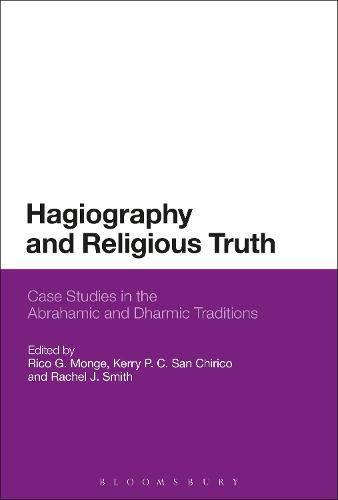Readings Newsletter
Become a Readings Member to make your shopping experience even easier.
Sign in or sign up for free!
You’re not far away from qualifying for FREE standard shipping within Australia
You’ve qualified for FREE standard shipping within Australia
The cart is loading…






The hagiographic materials from the world’s religions can tell us much about the beliefs and practices of the people, yet the limited degree to which hagiography has been used as an instrument for understanding diverse religious traditions is surprising. Hagiography and Religious Truth provides a clearer understanding of the ways hagiography functions to disclose truth for practitioners and suggests various ways that these underexploited sources enrich our comprehension of broader issues in religious studies.
This volume provides a much-needed cross-cultural and interreligious comparison of saints’ lives, iconography, and devotional practices. The contributors show that hagiographic sources can in fact be truths of manifestation, which function as vehicles for prefiguring, configuring, and refiguring religious, social, and cultural life. The editors argue that some meanings simply cannot be communicated effectively through historical-critical methodologies. By exploring how hagiography functions throughout several of the world’s religious traditions, this volume illustrates how various modes of hagiography articulate religious ideas and uniquely represent conceptions of sanctity.
$9.00 standard shipping within Australia
FREE standard shipping within Australia for orders over $100.00
Express & International shipping calculated at checkout
The hagiographic materials from the world’s religions can tell us much about the beliefs and practices of the people, yet the limited degree to which hagiography has been used as an instrument for understanding diverse religious traditions is surprising. Hagiography and Religious Truth provides a clearer understanding of the ways hagiography functions to disclose truth for practitioners and suggests various ways that these underexploited sources enrich our comprehension of broader issues in religious studies.
This volume provides a much-needed cross-cultural and interreligious comparison of saints’ lives, iconography, and devotional practices. The contributors show that hagiographic sources can in fact be truths of manifestation, which function as vehicles for prefiguring, configuring, and refiguring religious, social, and cultural life. The editors argue that some meanings simply cannot be communicated effectively through historical-critical methodologies. By exploring how hagiography functions throughout several of the world’s religious traditions, this volume illustrates how various modes of hagiography articulate religious ideas and uniquely represent conceptions of sanctity.